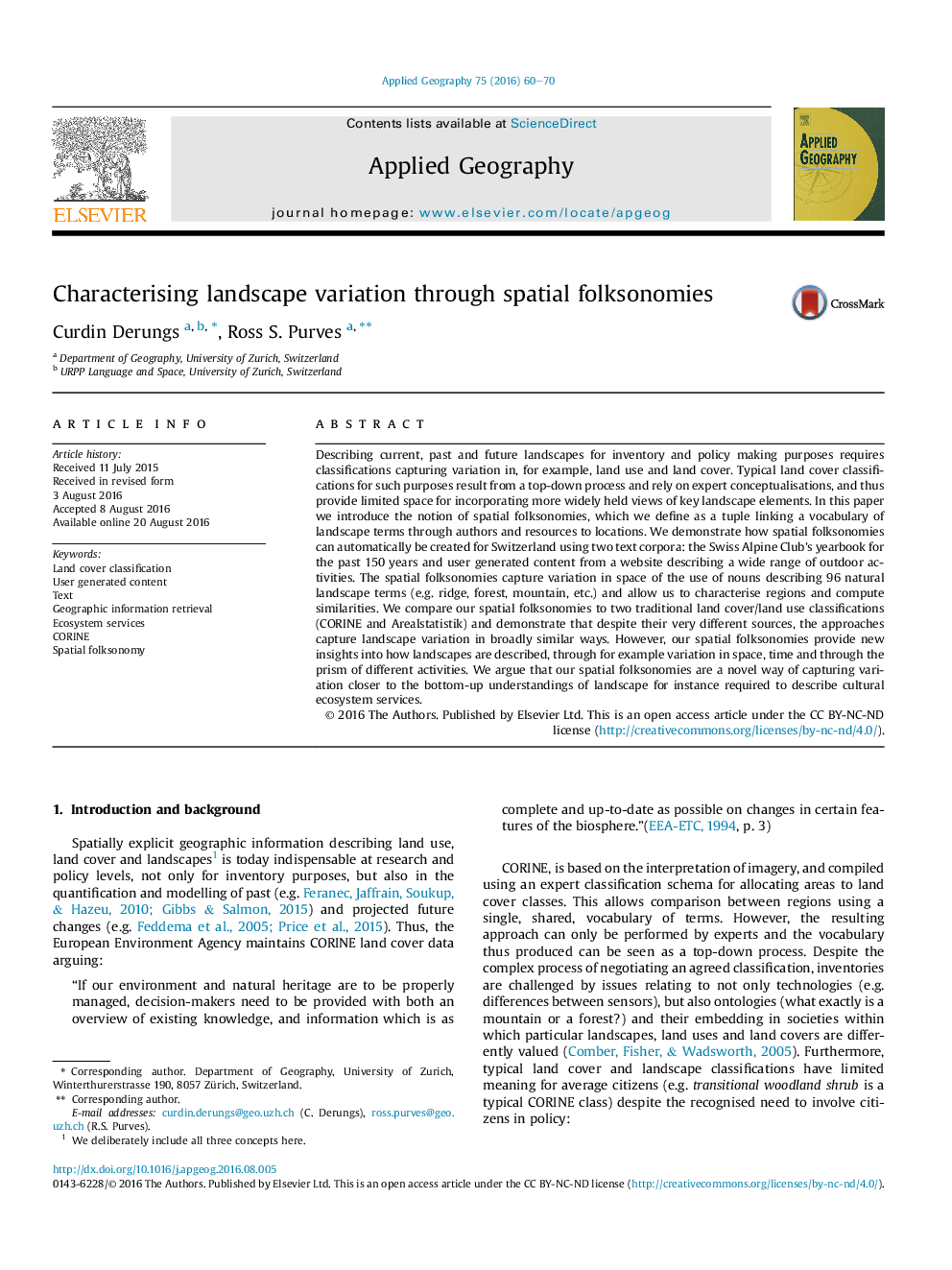| کد مقاله | کد نشریه | سال انتشار | مقاله انگلیسی | نسخه تمام متن |
|---|---|---|---|---|
| 6458454 | 1421042 | 2016 | 11 صفحه PDF | دانلود رایگان |
- We introduce spatial folksonomies as a bottom-up source of spatial information on how landscapes are described.
- An approach for automatically producing spatial folksonomies from written text corpora is presented.
- Spatial folksonomies offer rich spatial information and complement commonly used land cover classifications such as CORINE.
- Spatial folksonomies offer applicability for cultural ecosystem service assessment and landscape policy making.
Describing current, past and future landscapes for inventory and policy making purposes requires classifications capturing variation in, for example, land use and land cover. Typical land cover classifications for such purposes result from a top-down process and rely on expert conceptualisations, and thus provide limited space for incorporating more widely held views of key landscape elements. In this paper we introduce the notion of spatial folksonomies, which we define as a tuple linking a vocabulary of landscape terms through authors and resources to locations. We demonstrate how spatial folksonomies can automatically be created for Switzerland using two text corpora: the Swiss Alpine Club's yearbook for the past 150 years and user generated content from a website describing a wide range of outdoor activities. The spatial folksonomies capture variation in space of the use of nouns describing 96 natural landscape terms (e.g. ridge, forest, mountain, etc.) and allow us to characterise regions and compute similarities. We compare our spatial folksonomies to two traditional land cover/land use classifications (CORINE and Arealstatistik) and demonstrate that despite their very different sources, the approaches capture landscape variation in broadly similar ways. However, our spatial folksonomies provide new insights into how landscapes are described, through for example variation in space, time and through the prism of different activities. We argue that our spatial folksonomies are a novel way of capturing variation closer to the bottom-up understandings of landscape for instance required to describe cultural ecosystem services.
Journal: Applied Geography - Volume 75, October 2016, Pages 60-70
